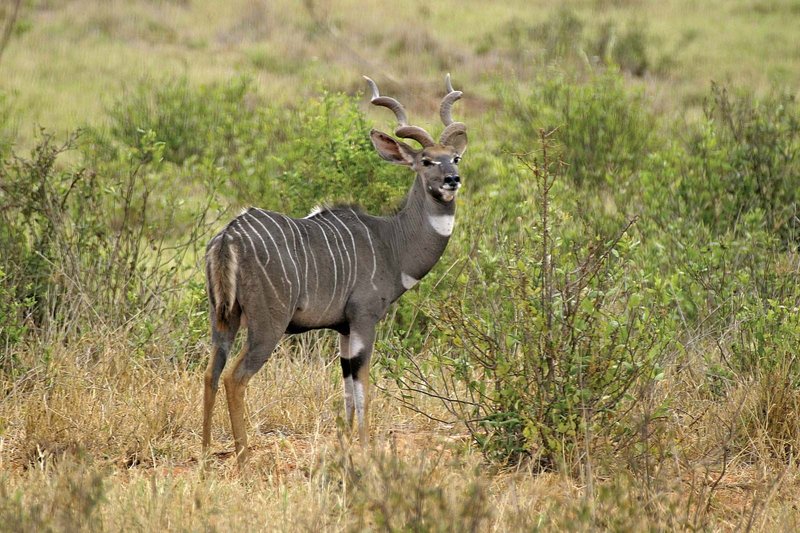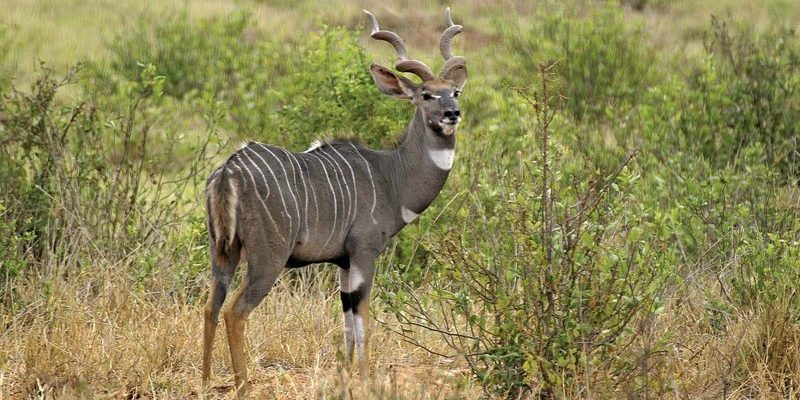
You might be wondering: how did the lesser kudu come to be such a wonderfully unique animal? To tackle this question, we’ll journey through time, exploring the evolutionary steps that led to its current form. We’ll look at its ancestral roots, adaptations, and how it fits into the ecosystem today. So, grab your favorite drink and let’s dive into the captivating world of the lesser kudu!
The Lesser Kudu: An Overview
To really grasp the evolutionary history of the lesser kudu, it helps to know a bit about what makes this species special. The lesser kudu (Tragelaphus imberbis) is a medium-sized antelope found primarily in the woodlands and thickets of East Africa. They are known for their long, slender legs and the impressive twisted horns that males display, which can reach up to 90 centimeters in length. Their striking coat, a mix of gray and brown with white stripes, helps them blend into their forested habitat—making them masters of camouflage.
Lesser kudus are browsers, feeding mainly on leaves, buds, and fruits found in their environment. This diet is significant not only for their survival but also plays a role in the health of their ecosystem. By consuming certain plants, they help to control vegetation growth, which allows other species to thrive. So, while they might seem like just another pretty face, they’re integral to the balance of their habitat.
Origins of the Lesser Kudu
To understand where the lesser kudu came from, we need to look back millions of years. The ancestors of the lesser kudu are believed to have diverged from other antelopes during the late Miocene epoch, around 10 million years ago. During this time, Africa was undergoing significant climatic changes, which led to the development of savannas and woodlands. These changes influenced the evolution of many species, including the lesser kudu.
What sets the lesser kudu apart from other antelope is its lineage. While it shares a common ancestor with the greater kudu, they branched off due to varying environmental pressures. The lesser kudu adapted to the thick underbrush of the bush, while the greater kudu favored more open savanna areas. This divergence allowed the lesser kudu to develop its unique morphological traits, including its smaller size and remarkable agility in navigating dense vegetation.
Physical Adaptations
One of the most striking features of the lesser kudu is its physical adaptability. Over thousands of years, these animals have honed several traits that give them an edge in their environment. For instance, their long legs help them move effortlessly through thick brush, allowing for quick escapes from predators. The combination of agile hops and incredible balance makes them quite hard to catch.
Their stunning coloration, with a dark brown coat and white stripes, serves as a form of camouflage. This helps them blend seamlessly into their surroundings, making it difficult for both prey and predators to spot them. Being a prey animal, these adaptations are vital for survival, allowing them to remain elusive in the wild.
Additionally, the males’ spiral horns serve not only as a display feature during mating rituals but also as a defensive tool against predators. The ability to fend off attackers, coupled with their exceptional hiding skills, creates a viable strategy for survival.
Behavior and Social Structure
Lesser kudus are generally solitary or found in small groups. While they may be shy, they do display interesting social behaviors. Males are territorial, often marking their area with scent markings and engaging in displays of dominance by showcasing their impressive horns. They might not be social butterflies, but they do communicate through a variety of vocalizations and body language.
When it comes to mating, males will compete for the attention of females by displaying their horns and engaging in ritualized fights. The females are typically more social, often seen in small groups with their young. This dynamic ensures a level of protection for the youngsters, who are highly vulnerable to predators.
Interestingly, lesser kudus are crepuscular, meaning they are most active during dawn and dusk. This behavior minimizes their exposure to predators while allowing them to forage for food in the cooler hours of the day. It’s a clever adaptation that maximizes their chances of survival while also keeping them hidden from sight.
Habitat and Distribution
The lesser kudu is primarily found in the bushy and wooded areas of East Africa, including countries like Kenya, Tanzania, and Ethiopia. They thrive in habitats that offer plenty of cover, such as dense thickets and lowland forests. This preference for sheltered environments is closely tied to their survival tactics.
As their habitat has changed over time, the lesser kudu has adapted remarkably well. This adaptability is crucial as they navigate various challenges, including habitat destruction due to human activities. The conservation of their natural habitats is essential to ensure that these beautiful creatures can continue to thrive in the wild.
Sadly, their populations are declining due to hunting and habitat loss. Efforts are being made to protect their habitats and promote sustainable practices that allow for coexistence between humans and wildlife. By understanding the lesser kudu’s evolutionary history, we can better appreciate the importance of preserving their environment for future generations.
The Lesser Kudu and Ecosystem Balance
The lesser kudu plays a pivotal role in maintaining the health of their ecosystems. As browsers, they help control the growth of shrubs and young trees, promoting the growth of diverse plant species. This, in turn, supports a wide range of other animals and plants in their habitat. It’s like a well-tuned orchestra, where each species plays its part to create a balanced, healthy environment.
By grazing on certain plants, lesser kudus also contribute to seed dispersal. They eat fruits and then pass the seeds through their digestive systems, allowing these seeds to germinate far from their parent plants. This process is crucial for the regeneration of vegetation in their ecosystems.
Understanding the lesser kudu’s place within the ecosystem highlights the intricate connections between species. Preserving their habitats is not just about saving one species; it’s about maintaining the delicate balance of life that sustains entire ecosystems.
Conservation Efforts and Future
Conservation of the lesser kudu is essential for ensuring the survival of this remarkable species. Various organizations and local communities are working together to promote awareness and protection of their habitats. Initiatives include anti-poaching efforts, habitat restoration projects, and education programs that engage local populations in wildlife conservation.
Community involvement is vital. When people understand the value of wildlife and the role it plays in the ecosystem, they are more likely to support conservation efforts. It’s about creating a sense of stewardship over the land and wildlife that share it.
As we look toward the future, the challenge remains to balance human development with wildlife conservation. Sustainable practices can help ensure that both humans and the lesser kudu—and many other species—can coexist.
In conclusion, the evolutionary history of the lesser kudu is a testament to the resilience and adaptability of life. From its unique characteristics to its vital role in the ecosystem, this species serves as a reminder of the beauty of nature and the importance of safeguarding it. By understanding and appreciating the lesser kudu, we can contribute to a world where wildlife thrives alongside human progress.

